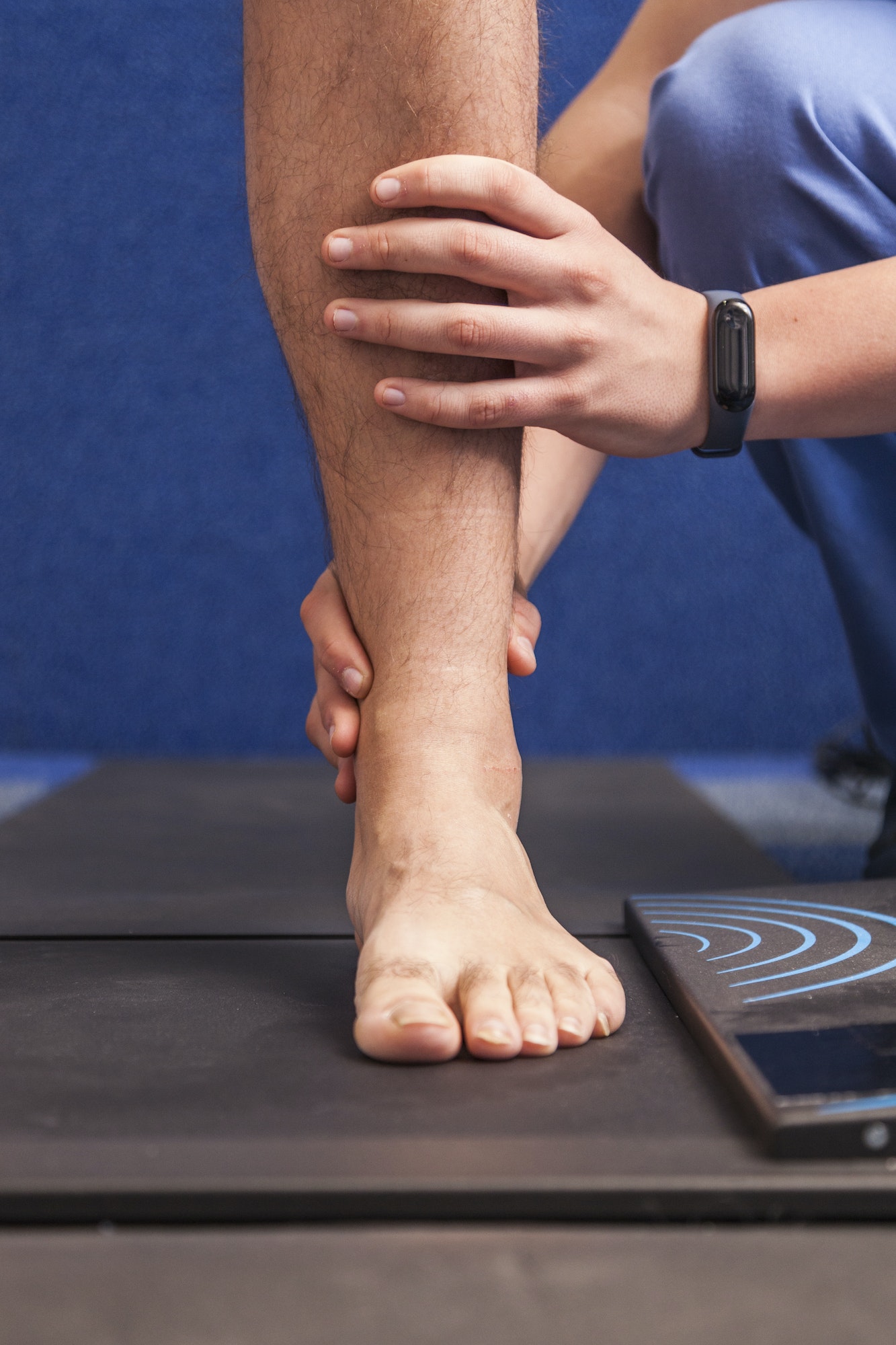Table of Contents
Common Causes of Foot Pain Related to the Heel
Plantar Fasciitis
What Is It?
Diagnosis
Treatment
Several treatment options are available, including rest, stretching exercises, physical therapy, and the use of supportive footwear or orthotics. It is also important to educate individuals afflicted with plantar fasciitis on preventive strategies such as weight loss and modifying their physical activity levels to reduce the risk of recurrence. Early medical intervention, along with education on preventative measures, provides an excellent opportunity for healthcare providers to minimize patient pain and suffering and help them regain the activities they love to participate in, pain-free.
Factors that predispose patients to Plantar Fascia Pain can include:
- Age. Plantar fasciitis is most common between the ages of 30 and 50.
- Certain types of exercise. Long-distance running, ballet dancing, and dance aerobics
- Faulty foot mechanics. Being flat-footed, having a high arch or even having an abnormal pattern of walking can adversely affect the way weight is distributed when you’re standing and put added stress on the plantar fascia.
- Obesity. Excess pounds put extra stress on your plantar fascia.
- Occupations that keep you on your feet. Factory workers, teachers, and others who spend most of their work hours walking or standing on hard surfaces can damage their plantar fascia.
Treatment Options
Custom Orthotics
These shoe inserts are custom made, to support your foot structure perfectly. They are built by hand after a prescription is built by your podiatrist to answer the exact needs your foot has. If you have a flat foot, arch support will be built in. If you have a decreased fat padding, extra cushion can be built in. Your Weil Foot & Ankle podiatrist will complete a full evaluation and determine the specifics of how your orthotics should be constructed.
Immobilizing with Night Splints – This is a device that you wear at night that causes passive stretching while you sleep. You will be trained on how to use it by our medical staff.
- Function is to provide stretching while immobilized during sleep or rest.
- Improves post-static dyskinesia which occurs with your first steps in the morning.
Steroid Injections
These are not appropriate in all situations, but are a tool available for our podiatrists to use if the case specifics are right.
- Injection consists of local anesthesia and a steroid: This decreases the pain and reduces the inflammation at the source.
- Plantar medial approach right to the source of inflammation.
Physical Therapy
At Weil Foot & Ankle Institute, we have our own Physical Therapy department. While our PTs are able to treat all parts of the body, they are also specialized in therapy of the foot and ankle and work closely with our podiatrists to improve outcomes and expedite recovery. You won’t find such specialized foot and ankle therapy anywhere else!
Shock Wave Therapy
- Noninvasive method that uses high-energy acoustic waves (shock waves) to deliver a mechanical force to the body’s tissues.
- This promotes an acute inflammation response >> improve blood flow to encourage the body to repair and heal itself.
Tarsal tunnel Syndrome
What Is It?
This is pain that is caused by inflammation of the large, posterior tibial nerve, which runs from the ankle, through the inner side of the heel and to the arch. If compression or damage occurs to this nerve, it can cause a lot of pain or Tarsal Tunnel Syndrome (TTS).
Symptoms include numbness, tingling, and pain that radiates from the heel and can go as far as the toes. People often experience this pain in the morning with their first steps, making it easy to confuse with Plantar Fasciitis. TTS pain often, but not always, continues even when resting and can become a sharp, shooting pain. Some patients notice a burning sensation, or weakness in the foot as well.
Tarsal Tunnel Syndrome is caused by an irritation or inflammation of the posterior tibial nerve. This nerve can become irritated or inflamed because of swelling in the tissues of the leg, ankle and foot, that surround the nerve, due to impact injuries or twist injuries, or due to flat feet which can impinge the nerve.
Diagnosis
Because so many of the symptoms of TTS are similar to the symptoms of PF, TTS can often be missed initially. A certified podiatrist however, knows exactly what to look for, and what testing is needed for an accurate diagnosis.
A clinical test, called a Tinel’s test is often performed which involves compressing or palpating the tibial nerve where it travels through the ankle. If pain is produced, that is considered a positive Tinel’s test and indicated TTS may be the cause of the pain.
The next step of the process is to confirm the suspected diagnosis using nerve conduction velocity and electromyogram testing. Performed by a neurologist, the results of these tests are used to positively confirm TTS.
MRI, available at several of our Weil Foot & Ankle Institute clinics, is another diagnostic tool used to look for soft tissues in the tarsal canal that could be impinging the Tibial nerve.
Treatment
Podiatrists utilize a number of tools to treat TTS. Custom orthotics, compression bracing and/or socks, steroid injections, physical therapy, and even surgery are among the options for our Weil Foot & Ankle providers.
Stress Fracture Heel
What Is It?
As active individuals, athletes often push their bodies to the limits in order to achieve their goals. However, this increased activity can also lead to increased risks of injury, including stress fractures in the heel. A stress fracture is a small crack in a bone that is caused by repetitive stress or overuse, and it can be a frustrating and painful injury for athletes to deal with. Identifying and treating a stress fracture in the heel is crucial for proper healing and to prevent further complications. In this comprehensive guide, we will discuss the signs and symptoms of a heel stress fracture, how to diagnose it, and the various treatment options available for athletes and active individuals.
As part of medical education, it is crucial to deeply understand various injuries, including stress fractures in the heel, specifically in the calcaneus bone. When left untreated, this type of injury can significantly impact an individual’s overall quality of life. Therefore, recognizing the signs and symptoms of stress fractures in the calcaneus is of utmost importance for healthcare professionals.
Symptoms
Some common indicators of this condition include persistent pain in the affected area, swelling or bruising, and difficulty in walking or standing for extended periods. Furthermore, the causes of stress fractures in the heel vary from individual to individual, but can often be attributed to overuse, high-impact activities, or underlying medical conditions such as osteoporosis. Proper diagnosis and treatment by a medical professional are critical in managing calcaneus stress fractures. Treatment options may include immobilization, physical therapy, or in severe cases, surgery. By educating ourselves and our patients on the risks and treatment options for stress fractures in the heel and calcaneus, we can help individuals avoid long-term disability and maintain optimal health.
Diagnosis
Treatment Options
Treatment of a stress fracture of the heel bone (or really any bone in the foot) will likely involve rest, offloading, and physical therapy. Utilizing all the tools available allows podiatrists and the team of medical professionals that support them to reduce pain and improve healing time. Following the instructions given (resting, not weight-bearing, etc) is imperative to the healing process. Many athletes who have stress fractures find this difficult, but not following instructions inevitably leads to further injuries and even more time off the field. Following the guidelines immediately from the time of diagnosis is the fastest way to return to activity.
These injuries often result from overuse and require prompt identification and management to facilitate successful healing.
Conclusion: Types of Heal Pain and What To Do About It
In conclusion, heel pain can be a debilitating condition that affects people of all ages. While heel pain is a commonly occurring issue, it is important to note that there are various causes and the exact cause can only be determined by a certified Podiatrist. Accurately diagnosing the underlying cause of heel pain is crucial to ensure effective treatment. If you are experiencing heel pain, it is always recommended to consult with a medical professional for an accurate diagnosis and treatment plan. With the right care, you can regain your mobility and get back to your daily activities.

Meet Weil Foot & Ankle Institute
By: Weil Foot & Ankle Institute, Published: Jun 12th, 2023
Review By: Bilal Siddiqui DPM – Jun 12th, 2023


